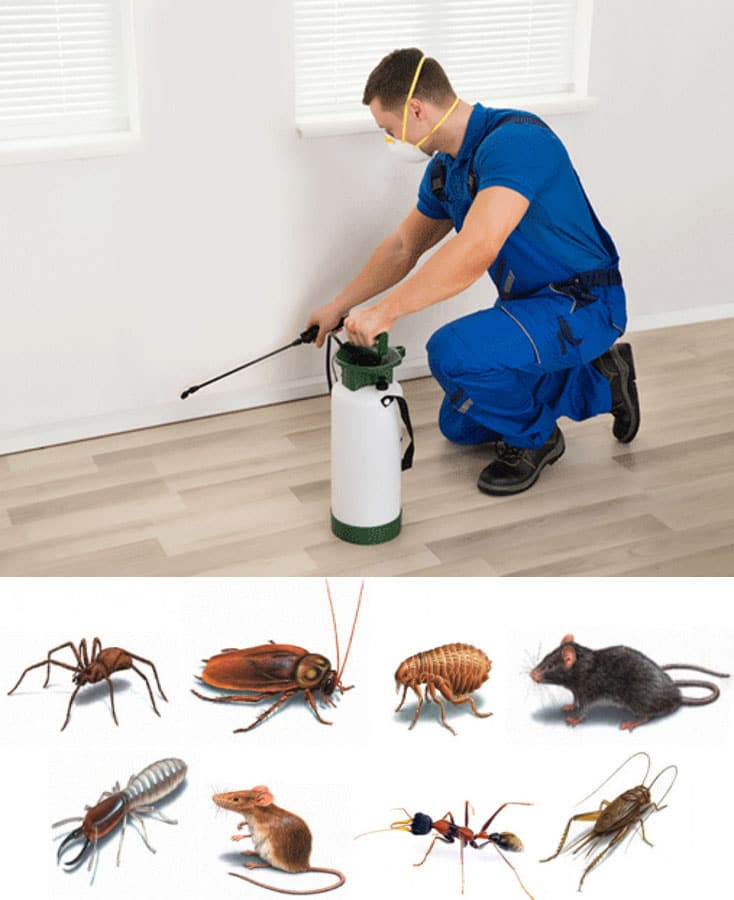Pest Control using eco-friendly and child-friendly treatment options.
Eco-Friendly Parasite Control Approaches for Handling Wild Animals in Urban Areas
Urban locations typically find themselves at the crossway of human task and wild animals, bring about distinct difficulties in bug monitoring. Environmentally friendly strategies highlight lasting coexistence, using techniques such as environment modification and all-natural repellents to minimize human-wildlife problems. These techniques not just protect the setting yet additionally enhance neighborhood engagement in wildlife management. As city populations proceed to grow, recognizing the dynamics of wildlife interactions ends up being increasingly critical. What cutting-edge approaches can be applied to make sure both ecological equilibrium and urban safety? Exploring this concern exposes an engaging landscape of possible solutions.
Understanding Urban Wildlife Characteristics
Recognizing Urban Wildlife Dynamics is important for developing reliable and environment-friendly parasite control techniques. Urban locations are progressively coming to be environments for different wild animals types, driven by aspects such as habitat fragmentation, food accessibility, and human infringement. Recognizing these characteristics permits a nuanced technique to pest administration that aligns with eco-friendly principles.
Urban wild animals often consists of varieties such as raccoons, squirrels, and birds, which adapt to city settings, finding particular niches in environment-friendly areas, parks, and also domestic areas. Their visibility can bring about conflicts with humans, especially when they exploit human sources for food and shelter. Comprehending the habits and environmental roles of these types educates approaches that lessen negative communications while advertising biodiversity.
In addition, recognizing the interdependencies within city ecological communities helps in recognizing vital areas for environment preservation and remediation. This knowledge adds to the growth of incorporated parasite administration (IPM) methods that take into consideration the environmental balance, consequently lowering reliance on dangerous chemicals. By fostering coexistence between humans and metropolitan wildlife, cities can create healthier settings that profit both residents and neighborhood communities, paving the method for sustainable city living.
Natural Repellents and Deterrents
All-natural repellents and deterrents offer a lasting choice to conventional bug control techniques by using the power of nature to keep undesirable types away. These environment-friendly services generally utilize plant-based active ingredients, vital oils, and various other normally taking place materials that deter bugs without damaging the atmosphere.
One efficient all-natural repellent is peppermint oil, which is recognized to drive away rodents and bugs. Its solid fragrance is undesirable to numerous pests, making it a preferred choice for urban setups. Vinegar and citrus peels can serve as deterrents, as their strong smells are commonly unattractive to numerous wild animals.
Furthermore, diatomaceous earth is an all-natural powder that can be spread in areas vulnerable to pest activity, effectively dehydrating and preventing pests without presenting dangers to non-target species. Furthermore, garlic sprays and neem oil are identified for their capacity to fend off a wide variety of bugs, consisting of both insects and larger wild animals.
Carrying out these natural repellents not just minimizes reliance on chemical pesticides but additionally advertises a much healthier urban environment, promoting a more balanced conjunction between people and wild animals. By using these strategies, urban areas can effectively manage bug populaces while decreasing ecological effect.
Environment Modification Methods
Reliable habitat alteration techniques play an important duty in sustainable bug administration by altering the setting to make it less favorable to pest infestations. By recognizing the environmental characteristics of metropolitan locations, homeowner can implement critical modifications that hinder bugs while advertising biodiversity.
(Insect Control)One key technique involves preserving proper hygiene. This includes routine waste removal, safeguarding trash can, and getting rid of standing water to lower breeding websites for bugs and rats. Additionally, landscape design techniques such as picking native plants can improve environmental balance, providing environments for helpful organisms while decreasing sources for pests.
One more important approach is to seal access factors in buildings. Inspecting and repairing splits in structures, wall surfaces, and windows can considerably lower pest accessibility. Furthermore, producing physical barriers, such as fencings or plant barriers, can hinder wild animals activity right into human-inhabited areas.
Integrated Pest Administration Practices
Building upon environment adjustment methods, integrated pest monitoring (IPM) techniques offer an all natural method to managing bug populaces while lessening ecological influence. IPM incorporates different approaches, consisting of organic, social, mechanical, and chemical controls, to accomplish effective insect management.
Biological control includes the intro of all-natural killers or bloodsuckers to reduce insect populaces. Cultural practices, such as crop turning and hygiene, interfere with pest life cycles and reduce their habitats - Pest control service. Mechanical controls, like traps and barriers, supply prompt remedy for insect pressures without chemical treatment
Chemical controls are used as a last resource, focusing on targeted applications that restrict harm to non-target types and the setting. The choice of eco-friendly chemicals, when required, is important to the IPM structure. Additionally, keeping track of pest populations and examining prospective damage aids educate decision-making, making certain that interventions are prompt and reliable.
Neighborhood Participation and Education

(Residential pest control Port Charlotte)Workshops and informational sessions can outfit residents with understanding about indigenous varieties, habitat conservation, and reliable non-toxic pest management techniques. Partnership with institutions, neighborhood organizations, and government agencies additionally enhances academic outreach, making sure that necessary details reaches diverse target markets.
Furthermore, community-led initiatives, such as community clean-up days and environment reconstruction projects, not just promote biodiversity but also enhance neighborhood ties. Pest control service. By urging homeowners to share their experiences and monitorings, neighborhoods can establish targeted techniques that attend to specific local bug issues
Integrating feedback from locals right into parasite monitoring intends makes it possible for a more receptive and flexible strategy to wild animals obstacles. Eventually, informed and engaged neighborhoods are key to attaining long-term success in environment-friendly pest control, bring about much healthier urban atmospheres that appreciate both human and ecological requirements.

Verdict
In verdict, eco-friendly parasite control comes close to offer lasting solutions for managing urban wildlife. By prioritizing habitat adjustment, using natural repellents, and executing incorporated insect administration techniques, communities Read Full Article can foster an unified conjunction with regional animals.